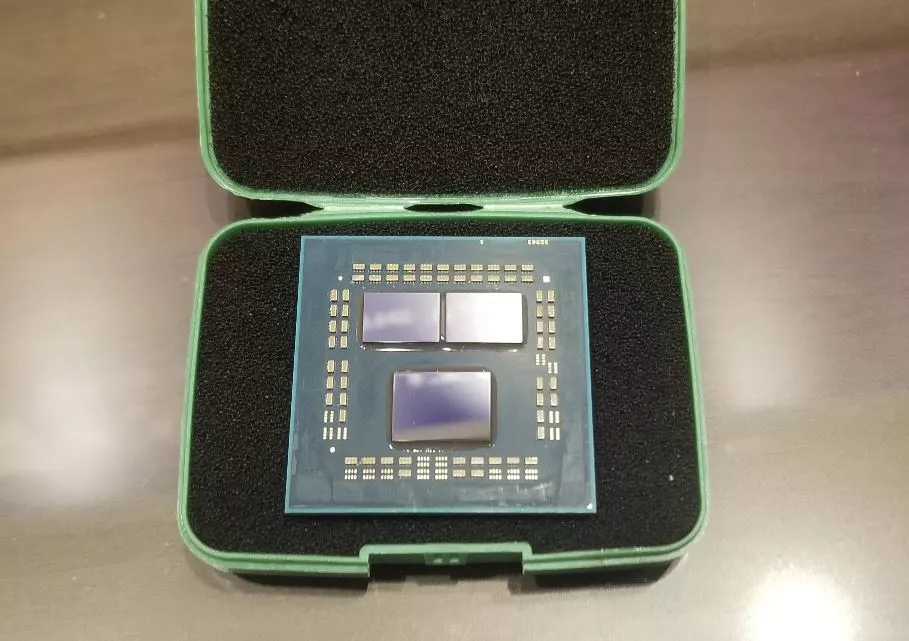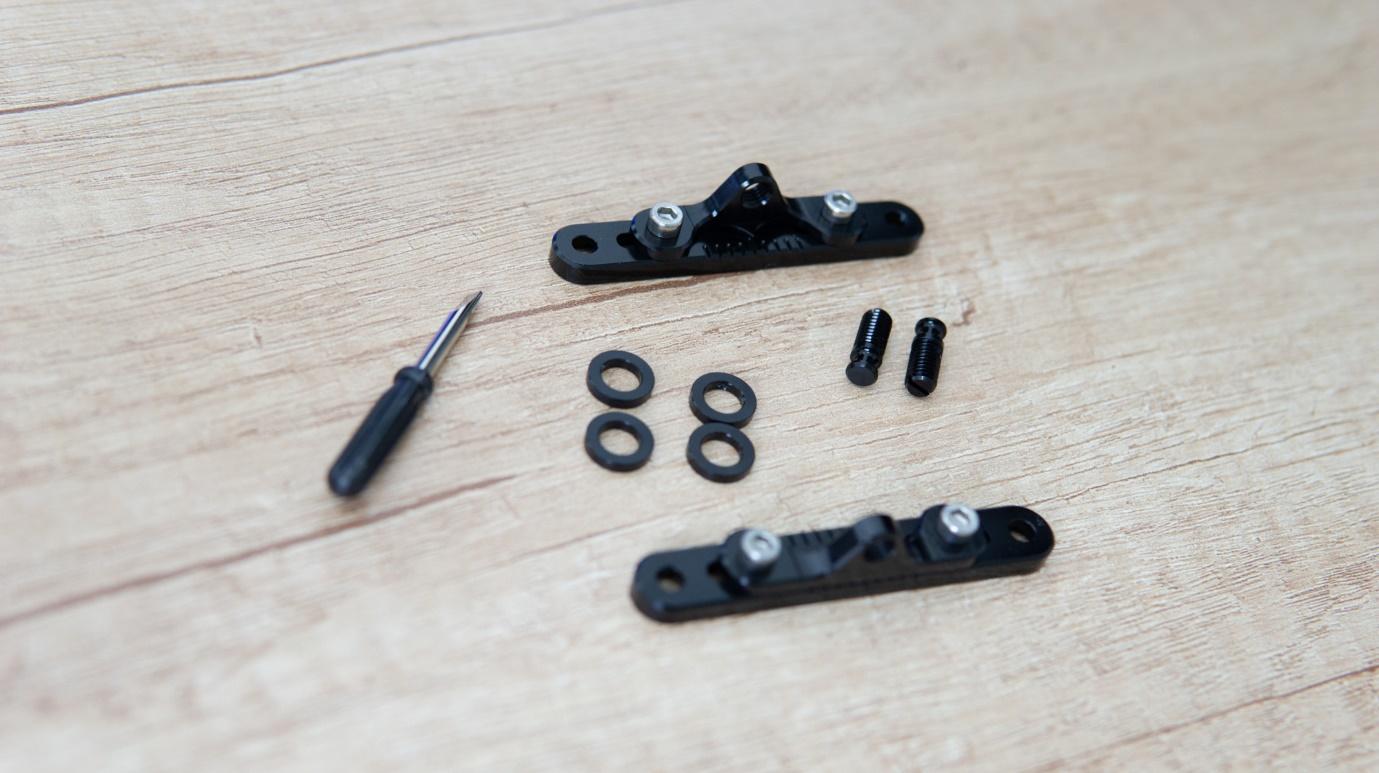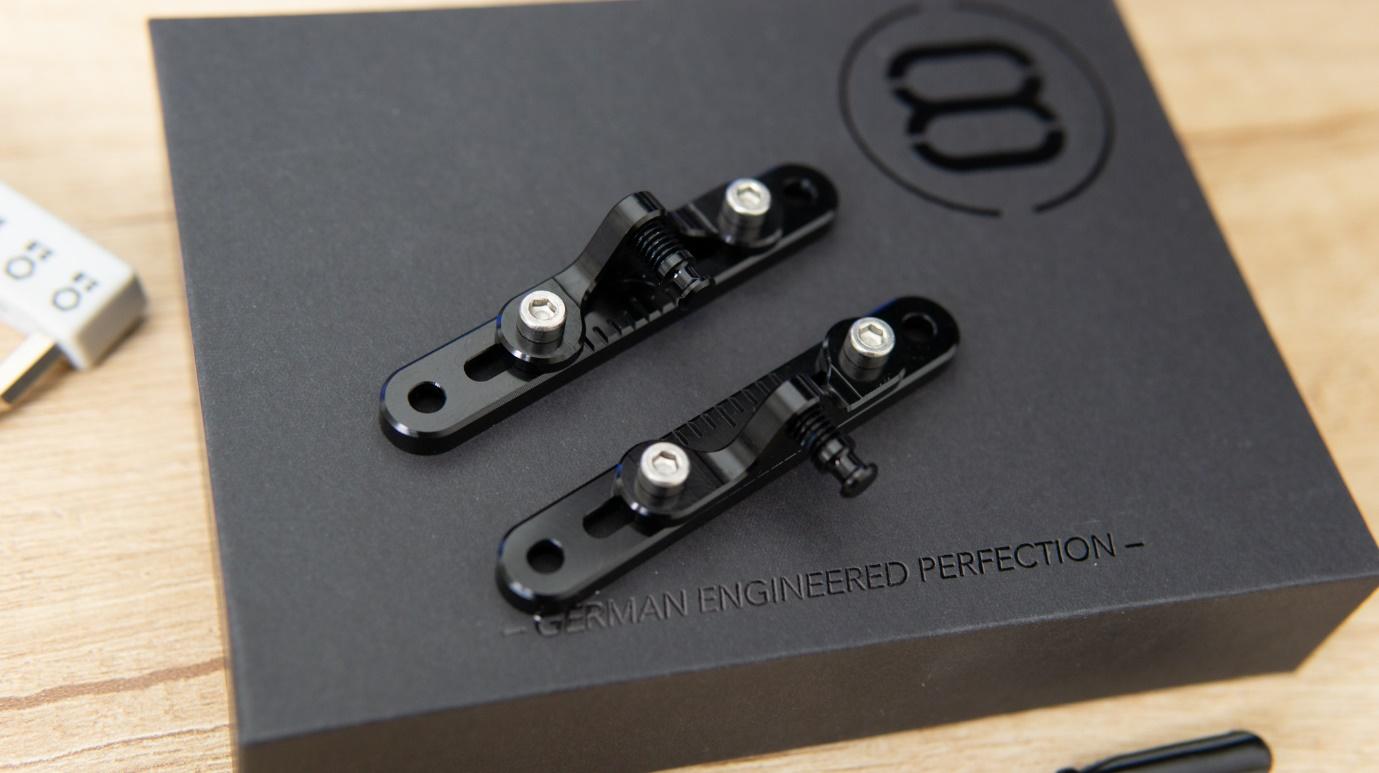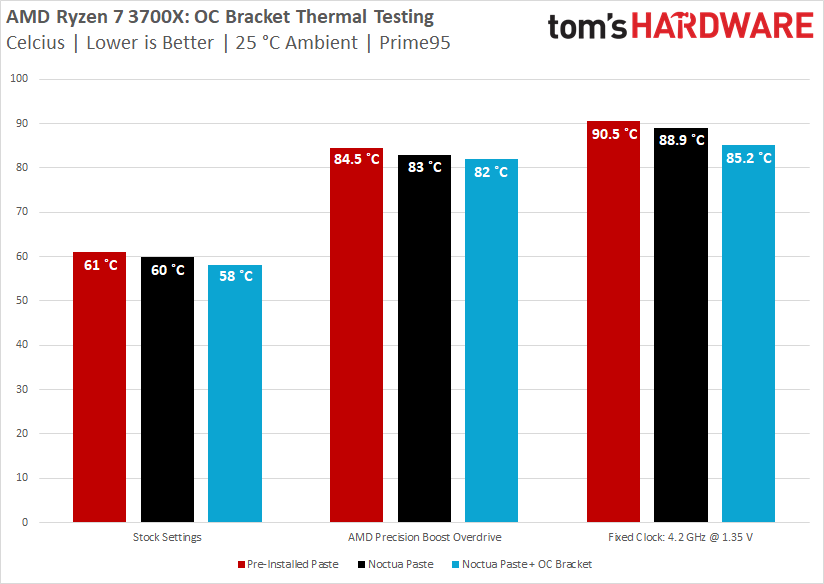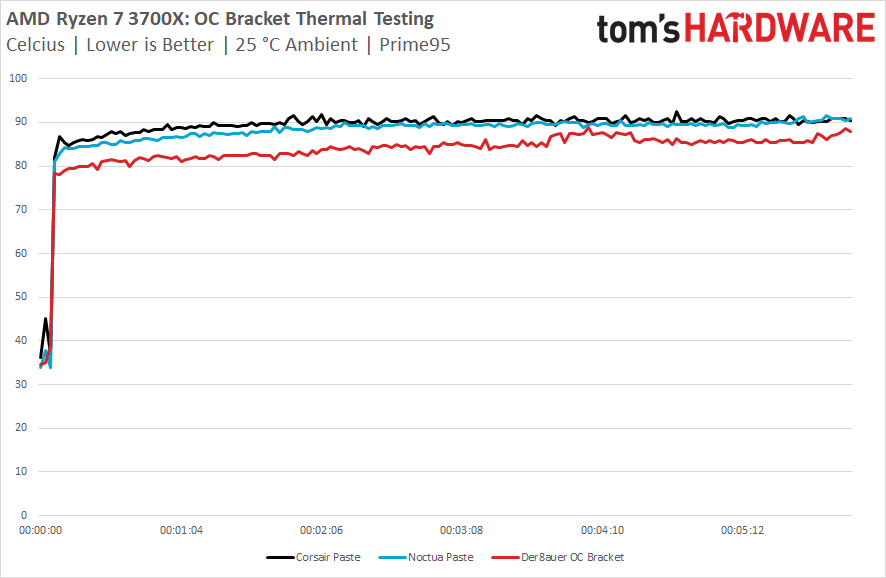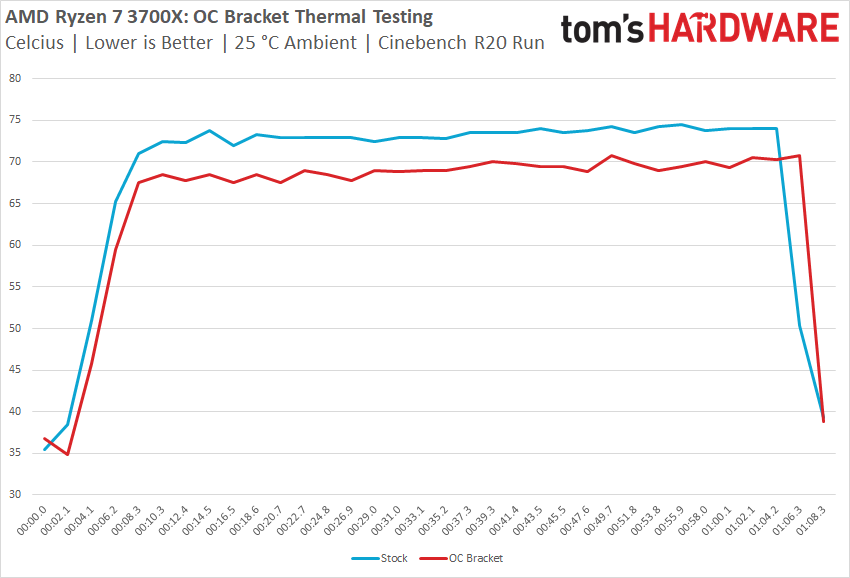Tom's Hardware Verdict
A four-degree temperature drop might not be groundbreaking, but Der8auer’s Ryzen OC bracket offers it to you for very little money and very little risk. If you’re overclocking, or simply want to optimize your Ryzen 3000 thermals, this is an accessory worth considering.
Pros
- +
Dropped our CPU temp four degrees
- +
Easy installation
- +
Only $30
Cons
- -
Doesn’t work with air coolers
- -
Small thermal gain only useful in limited scenarios
Why you can trust Tom's Hardware
Remember the whole heatpipe discussion with Ryzen 3000? Well, it didn’t end there. It turns out, liquid coolers are also sub-optimally placed in their stock configuration when used with AMD’s chiplet-based Ryzen 3000 CPUs. The simplest solution? Install this Der8auer-branded Ryzen OC Bracket, which will move your cooling plate to an ideal position for your specific CPU model.
This bracket comes in two flavors: an AIO variant and one designed for custom open loops. Today we’re testing the AIO variant of this bracket. It simply replaces the stock AMD CPU cooler mounting bracket, enabling you to adjust the liquid cooler’s position on the chip.
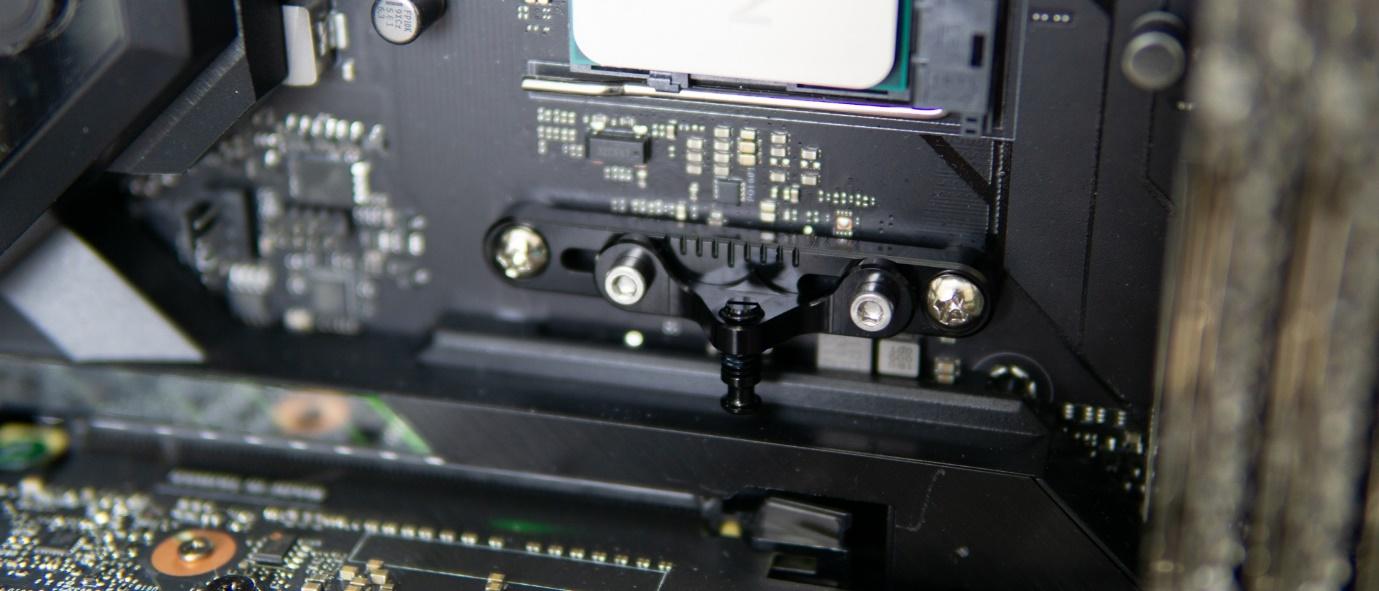
Why Would You Want to Shift the Cooler Off-Center?
The reason why you would want to do this is simple: AMD’s Ryzen 3000 chips don’t use one large die anymore, but a series of chiplets (head here for an inside look). In the consumer-geared products, there is one central IO die, next to which are either one or two so-called CCDs, which contain up to eight cores each. The result of this split is that AMD is able to create CPUs with more cores, but it also splits the single hotspot up into multiple sections. AIO liquid coolers are designed only to cool in the middle of their cold plate and thus don’t optimally cover the Ryzen 3000 chips’ CPU cores.
Of course, AMD’s Ryzen 3000 chips are built on the 7nm process from TSMC, which means they aren’t very hot-running chips to begin with. In practically all cases, a 240 mm all-in-one cooler is the most they could ever need, and especially at stock settings they don’t produce a lot of heat. For most of us, this really isn’t a necessary gadget to put in our PCs.
But there is always a group of enthusiasts who like to push their chips to the limit and finetune their system’s operation. That’s who the Ryzen OC Bracket is for. There is no point in delidding Ryzen 3000 chips, as the socket’s mechanism will get in the way when trying to seat the cooler onto the chiplets, so why not instead adjust the cold plate’s placement on the heatspreader to compensate for the chip’s unusual internal topography?
How to install the OC Bracket
Installing the Ryzen OC bracket is dead simple. Der8auer’s instructions want you to install the brackets first and then configure them for your CPU, but we found that it’s easier to configure them outside the system without all your other components getting in the way and then install them.
For the Ryzen 3600 up to the Ryzen 3800X (and presumably the XT variant too) you’ll want to nudge the sliders over to the 3.25 mm mark and secure them. If you’re installing the bracket on a 3900X or 3950X, then you’ll want to leave it in the middle, as these chips use two CCD’s. Then, make sure you have both of the pins pointing downwards, and configure their lengths according to Der8auer’s specifications.
Get Tom's Hardware's best news and in-depth reviews, straight to your inbox.

To install the brackets into your system, simply unscrew the stock AMD brackets, but keep the screws. Then, place the washers, and install the Der8auer Ryzen OC brackets re-using the screws that you just freed up from your motherboard.


And that’s it. Now you can install your AIO liquid cooler just as you normally would, except roughly a centimeter lower and possibly a bit to the right, depending on which CPU you have. This ends up looking a little funny, as if the CPU block is sagging, and the CPU ends up visible from above, but it’s very secure.
Because of the simplicity of this design, it should work with most AM4 motherboards and liquid coolers, but do be sure to check Der8auer’s compatibility list if you want to be sure. Particularly keep in an eye out for electronics around the brackets, though the brackets are lifted slightly off from the motherboard due to the washers, and note that the CPU block will reside about a centimeter lower. Because of this, these brackets won’t play so nice with many Mini-ITX boards.
Test Results
We tested the Ryzen OC bracket with an AMD Ryzen 7 3700X installed in an Asus Crosshair VIII Formula motherboard, using the Corsair H100i Pro RGB for cooling. We chose this CPU and cooler because they’re representative of what many of us are likely to use, and the Crosshair VIII Formula motherboard because it was the only X570 motherboard we had at this test location.
| CPU | AMD Ryzen 7 3700X | Row 0 - Cell 2 |
| Motherboard | Asus Crosshair VIII Formula | Row 1 - Cell 2 |
| Memory | G.Skill Trident Z Royal (32 GB, 4x 8 GB) 3600 MHz, CL16 | Row 2 - Cell 2 |
| Graphics | Graphics EVGA GTX 2080 Super Gaming Black | Row 3 - Cell 2 |
| CPU Cooling | Corsair H100i Pro RGB | Row 4 - Cell 2 |
| Thermal Paste | Noctua NT-H2 Thermal Paste | Row 5 - Cell 2 |
| Storage | Samsung 970 Evo Plus 1TB | Row 6 - Cell 2 |
| Power Supply | be quiet! Straight Power 11 850W | Row 7 - Cell 2 |
We started off running thermal tests with Prime95 at the smallest FFT’s setting to maximize the CPU’s heat output. We first tested it at stock settings, then with PBO enabled, and finally with a fixed clock of 4.2 GHz at 1.35 V on all cores. Tests were run using the pre-applied paste on the AIO, with the Noctua NT-H2 paste, and using the Noctua NT-H2 paste in combination with the Der8auer OC Bracket. In each configuration, Cinebench R20 was also run three times and the scores averaged. The room was thermally-controlled to stay at 25 degrees Celsius.
At stock settings, all scenarios lead to running into the 3700X’s power limit of 88W, which resulted in low thermals across the board. The improved paste and OC bracket each helped a bit.
Jumping to using AMD’s PBO (Precision Boost Overdrive), we started to see some interesting results. Thermals improved slightly, but we also witnessed slightly higher scores in Cinebench R20 runs as we improved the cooling setup. The difference wasn’t much though – the gain from adding the OC bracket was about 50 points, but it was consistent across three runs for each setup.
At 4.2 GHz on all cores with a voltage of 1.35V, results started to get more interesting. Using the pre-applied paste, the CPU ran at an average -- very uncomfortable -- temperature of 90.5 degrees, with peaks around 94 degrees. These are uncomfortably high thermals and we wouldn’t recommend running your chips at these kinds of temperatures for any extended period of time. Noctua paste dropped that number to 88.9 degrees average, but we still saw peaks above 90 degrees.
With the Ryzen OC Bracket installed, thermals were immediately much more comfortable. The average temperature of the Prime95 smallest FFTs test sat at 85.2 degrees, and at no time did the CPU temperature peak above 90 degrees. That’s still high, but temperatures will rarely ever reach those levels under most real-world loads.
For a more real-world example, below is a graph of two Cinebench R20 runs, one with the Ryzen OC Bracket and one without it. As you can see, temperatures are safer here, and the OC bracket offers a nice 3.3 degrees Celsius average improvement.
Of course, it’s also important to note that your own results may vary. Different CPUs and different all-in-one liquid coolers will behave differently, leading to higher or lower temperature differences. But the Ryzen OC Bracket no doubt helps temperature levels when pushing our Ryzen 3000 CPU to its limits.
Conclusion
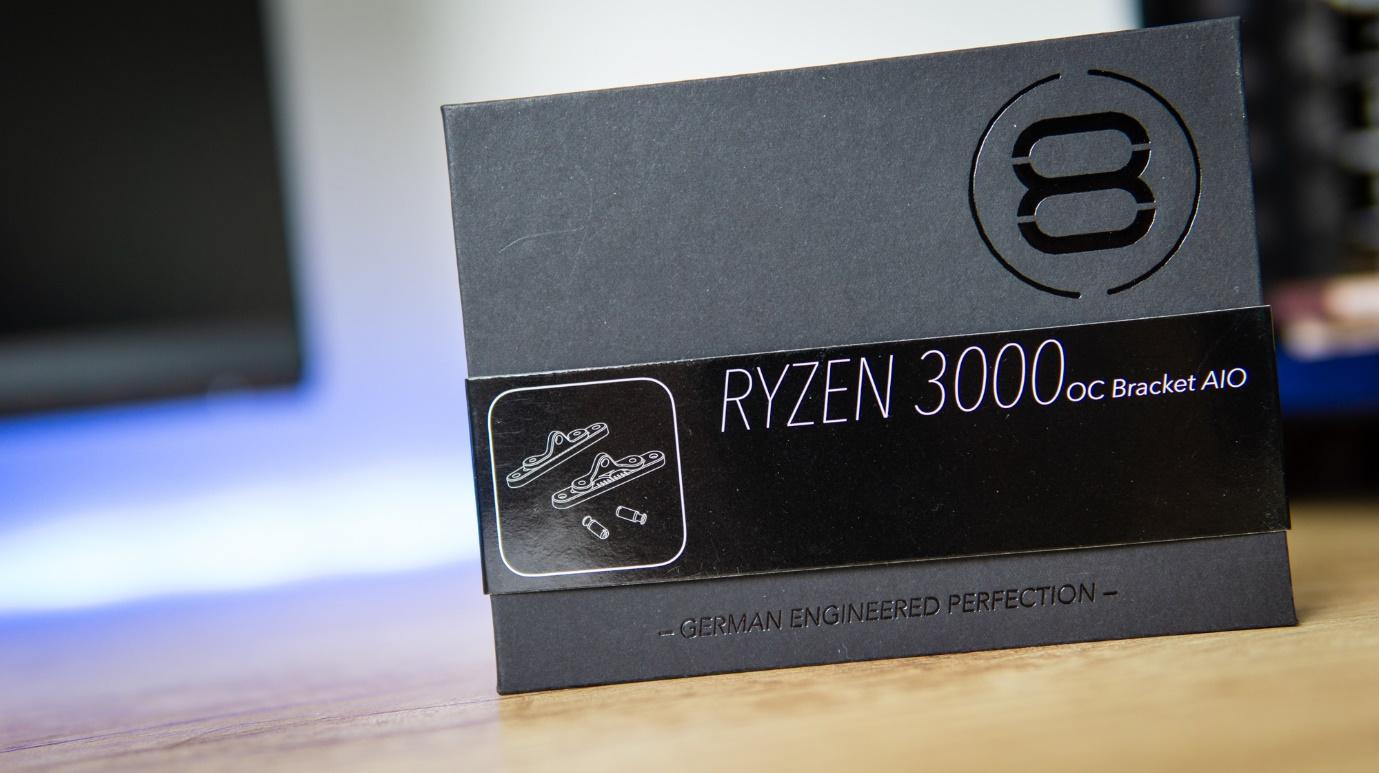
At stock settings, we can’t see a reason to buy the Ryzen OC bracket. The AMD Ryzen 3000 chips run cool enough not to need any further help, and you won’t gain any added performance because of the power limit. Once you enable PBO and lift all the power limit rules, there is a small performance gain that can be had, though it is fairly minor at best.
However, when you’re overclocking the chip to its limits, that’s when the Ryzen OC Bracket shines. Across an extended test, we witnessed an average improvement of 3.7 degrees between using the bracket and not using it. And while that isn’t huge, it is just enough to make or break an overclock where the chip is running at its thermal limits. Without the Ryzen OC Bracket, our overclocked 3700X wasn’t very happy, running at an average of 88.9 degrees and peaking near 94 degrees. But with the bracket installed, the CPU averaged 85.2 degrees and had no peaks above 90 during the same test. This is still hot, but it’s a Prime95 load, so most real-world loads won’t get anywhere near that demanding.
At $30, the Ryzen OC Bracket costs about as much as two tubes of quality thermal paste. It’s dead-easy to install, practically risk-free, and offers the extra performance to help a small, but passionate crowd of CPU enthusiasts like us.
Niels Broekhuijsen is a Contributing Writer for Tom's Hardware US. He reviews cases, water cooling and pc builds.
